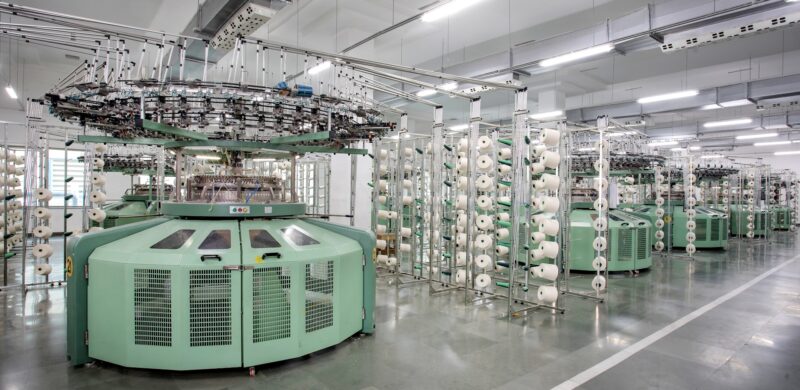Manufacturing companies are the backbone of modern economies. But with this success comes a hefty environmental cost. Industrial processes often contribute to air pollution, energy overconsumption, and hazardous waste, all of which significantly impact ecosystems worldwide.
Sustainable manufacturing offers a solution. By integrating eco-friendly practices, companies can minimize their environmental footprint while improving operational efficiency. This blog will explore actionable strategies that industries can adopt to achieve more environmentally responsible production methods.
Whether you’re running a large factory or a small production line, this guide will show you how sustainable manufacturing can help build a greener future for us all.
Understanding the Meaning of Sustainable Manufacturing
Sustainable manufacturing refers to the use of processes that are environmentally friendly, socially responsible, and economically viable. It’s more than just a buzzword. It’s an ongoing commitment to eco-friendly production at every stage of the product lifecycle—from sourcing raw materials to final packaging.
At its core, sustainable manufacturing focuses on reducing waste, conserving resources, and increasing energy efficiency. It benefits businesses in multiple ways, from lowering operational costs to meeting customer demand for greener products.
Key Benefits of Sustainable Manufacturing
Why should manufacturers adopt sustainable practices? Aside from safeguarding the environment, there are tangible benefits that make this a strategic choice for businesses.
1. Cost Savings Through Efficiency
Switching to energy-efficient machinery and minimizing resource waste can lower production costs. For example, many green factories now use renewable energy sources like solar panels to reduce dependency on fossil fuels, slashing utility bills in the process.
2. Stronger Brand Reputation
Consumers today are more eco-conscious than ever. A transparent commitment to sustainability enhances brand loyalty, making your products more desirable to the growing base of environmentally responsible buyers.
3. Regulatory Compliance
Governments across the globe are implementing stricter regulations to control industrial emissions and waste. Adopting sustainable manufacturing practices ensures you stay ahead of regulatory requirements, avoiding potential fines or legal issues.
4. Innovation Opportunities
Eco-friendly production often requires businesses to rethink traditional manufacturing processes. This drive for sustainability fosters innovation, leading to better products and more efficient methods.
Steps for Integrating Sustainable Manufacturing Practices
The transition to sustainability may seem daunting, but even incremental changes can yield significant results. Here are six actionable steps toward significantly reducing your environmental impact.
1. Optimize Energy Consumption
One of the easiest ways for any manufacturer to run a more eco-friendly operation is to focus on energy efficiency. Begin by auditing your facility’s energy usage. Replacing outdated equipment with energy-efficient alternatives can dramatically reduce electricity consumption.
Additionally, adopting renewable energy sources like wind or solar power can further minimize costs and pollution. Many companies have found a combination of these solutions beneficial, contributing to green factories across industries.
2. Use Sustainable Raw Materials
The materials you use significantly influence both production costs and environmental impact. By sourcing materials that are sustainably produced or recycled, you can reduce your carbon footprint.
For instance, industries using wood products can rely on responsibly managed forests certified by organizations like FSC (Forest Stewardship Council). This shift not only improves eco-friendly production but also appeals to customers demanding sustainable solutions.
3. Reduce, Reuse, and Recycle Waste
A core principle of sustainability is limiting the waste generated during production. Manufacturers can implement waste segregation systems to sort materials that can be repurposed or recycled.
Additionally, many companies are turning to technologies like 3D printing for waste reduction. This technique enables precision manufacturing, significantly lowering material waste compared to traditional machining.
4. Adopt Circular Economy Practices
Every year, millions of tons of industrial waste end up in landfills unnecessarily. The circular economy aims to address this issue by keeping materials in use for as long as possible.
Implementing practices like product take-back programs can allow companies to refurbish or remanufacture used goods. Not only does this minimize waste, but it can create new revenue streams for manufacturers.
5. Water Conservation Strategies
Many industrial processes consume substantial amounts of water. One way to practice sustainable manufacturing is by recycling water within production lines. Installing closed-loop water systems reduces freshwater demands and prevents industrial runoff from contaminating local ecosystems.
For example, companies in the textiles and dyeing industries have seen dramatic improvements by adopting water reclamation technologies, lowering overall consumption while safeguarding natural resources.
6. Invest in Employee Training
Even the most advanced systems are only as good as the people operating them. Companies must invest in training programs to educate employees about sustainable practices and goals.
From reducing energy consumption to adopting greener materials, ensuring that staff are aligned with sustainability objectives is essential for long-term success.
Challenges in Implementation and Ways to Overcome Them
Transitioning to eco-friendly manufacturing isn’t always straightforward. Some of the main challenges include high upfront investment costs, limited access to renewable energy, and the complexity of redesigning supply chains.
However, the following steps can address these hurdles effectively:
- Look for government grants or industry incentives aimed at encouraging sustainable practices.
- Partner with local suppliers who meet sustainability standards to build resilient, green supply chains.
- Start small by targeting one process or area of production before scaling your efforts.
By beginning with manageable changes and gradually expanding, manufacturers can pave the way for consistent long-term progress.
Why Sustainable Manufacturing Matters for the Future
The growing climate crisis demands urgent action from every sector. For manufacturers, adopting sustainable practices isn’t just a moral obligation but a pathway to improving efficiency, customer satisfaction, and innovation.
Green factories and eco-friendly production aren’t things of the future. They’re here now, offering solutions to reduce environmental harm while protecting business interests. Companies that prioritize sustainable manufacturing today will be at the forefront of an eco-conscious economy tomorrow.
Are you ready to make your manufacturing process greener? Take the first step toward a cleaner future. Apply these practices and start building a world where production and the planet thrive together. Learn more!


